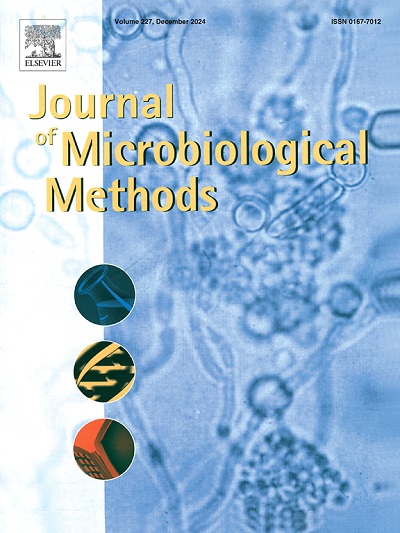Recovery of Clostridium from soil using Heat Shock enrichment technique and Agar Deeps
IF 1.9
4区 生物学
Q4 BIOCHEMICAL RESEARCH METHODS
引用次数: 0
Abstract
Some members of the genus Clostridium can produce butanol and hydrogen from renewable substrates contributing to biofuel production. In recent years, there has been a growing social demand for its utilization to realize a sustainable society. Clostridium is also attracting attention in the medical field, and research is being conducted to use it as a prodrug treatment and an intestinal bacterium to reduce cancer. Clostridium is a very attractive research subject. However, because Clostridium is an obligatory anaerobe, it requires expensive equipment not used to culture aerobic bacteria, making it difficult to start research on it. In this study, we developed an inexpensive and highly selective method for isolating Clostridium that does not require special equipment. This method combines two methods to increase the selectivity of Clostridium: the heat shock enrichment method, which selects non-spore-forming bacteria, and the agar deep method, which selects anaerobic bacteria based on their oxygen requirement. Using the isolation method developed in this study, we succeeded in isolating 11 new species of Clostridium. In total, 17 species of 3 genera were obtained from soil samples (0.2 g each) from only eight locations. Surprisingly, this represents 7.5 % of Clostridium reported to date.

利用热冲击富集技术和琼脂深度从土壤中回收梭状芽孢杆菌
梭状芽孢杆菌属的一些成员可以从可再生基质中生产丁醇和氢,有助于生物燃料的生产。近年来,为了实现可持续发展的社会,对其利用的社会需求日益增长。梭状芽胞杆菌在医学领域也引起了人们的关注,目前正在进行将其用作前药治疗和减少癌症的肠道细菌的研究。梭状芽胞杆菌是一个非常有吸引力的研究课题。然而,由于梭状芽胞杆菌是一种必需的厌氧菌,它需要昂贵的设备,而不是用于培养需氧细菌的设备,这使得对它的研究很难开始。在这项研究中,我们开发了一种不需要特殊设备的廉价和高选择性的分离梭状芽胞杆菌的方法。该方法结合了两种方法来提高梭状芽孢杆菌的选择性,一种是热休克富集法,选择不形成孢子的细菌,另一种是琼脂深度法,根据厌氧细菌的需氧量选择厌氧细菌。利用本研究开发的分离方法,我们成功分离出了11种新的梭状芽孢杆菌。从8个地点的土壤样品中共获得3属17种(每份0.2 g)。令人惊讶的是,这代表了迄今为止报道的梭状芽孢杆菌的7.5%。
本文章由计算机程序翻译,如有差异,请以英文原文为准。
求助全文
约1分钟内获得全文
求助全文
来源期刊

Journal of microbiological methods
生物-生化研究方法
CiteScore
4.30
自引率
4.50%
发文量
151
审稿时长
29 days
期刊介绍:
The Journal of Microbiological Methods publishes scholarly and original articles, notes and review articles. These articles must include novel and/or state-of-the-art methods, or significant improvements to existing methods. Novel and innovative applications of current methods that are validated and useful will also be published. JMM strives for scholarship, innovation and excellence. This demands scientific rigour, the best available methods and technologies, correctly replicated experiments/tests, the inclusion of proper controls, calibrations, and the correct statistical analysis. The presentation of the data must support the interpretation of the method/approach.
All aspects of microbiology are covered, except virology. These include agricultural microbiology, applied and environmental microbiology, bioassays, bioinformatics, biotechnology, biochemical microbiology, clinical microbiology, diagnostics, food monitoring and quality control microbiology, microbial genetics and genomics, geomicrobiology, microbiome methods regardless of habitat, high through-put sequencing methods and analysis, microbial pathogenesis and host responses, metabolomics, metagenomics, metaproteomics, microbial ecology and diversity, microbial physiology, microbial ultra-structure, microscopic and imaging methods, molecular microbiology, mycology, novel mathematical microbiology and modelling, parasitology, plant-microbe interactions, protein markers/profiles, proteomics, pyrosequencing, public health microbiology, radioisotopes applied to microbiology, robotics applied to microbiological methods,rumen microbiology, microbiological methods for space missions and extreme environments, sampling methods and samplers, soil and sediment microbiology, transcriptomics, veterinary microbiology, sero-diagnostics and typing/identification.
 求助内容:
求助内容: 应助结果提醒方式:
应助结果提醒方式:


